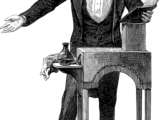Jane Austens novel Emma is a timeless masterpiece that continues to captivate readers with its wit, romance, and social commentary

Published in 1815, “Emma” tells the story of a young woman named Emma Woodhouse who fancies herself a matchmaker in the small village of Highbury. This article aims to provide a comprehensive overview of “Jane Austen Emma,” catering to individuals with a general interest in the topic.
Presentation of “Jane Austen Emma”
“Emma” is considered one of Jane Austen’s most accomplished works, showcasing her mastery of character development and social satire. Set in early 19th century England, the novel follows Emma as she navigates the complexities of matchmaking while overlooking her own feelings and the potential for love. This intricate exploration of human relationships and the follies of social hierarchy makes “Emma” a compelling read for both literary enthusiasts and casual readers alike.
Historical Development of “Jane Austen Emma”

Since its publication, “Emma” has garnered both critical acclaim and popular success. However, its journey from the pages of Austen’s manuscript to its cherished status today was not without challenges and transformations.
– Initial Reception: Upon its release, “Emma” received mixed reviews from literary critics. Some praised Austen’s keen observation of characters and wit, while others criticized the novel’s lack of moral lessons and overt romance.
– Rehabilitation as a Classic: In the years following Austen’s death in 1817, her works gained increasing recognition and appreciation. By the mid-19th century, “Emma” was recognized as a classic of English literature, with critics praising its sharp social commentary and clever narrative structure.
– Adaptations and Popularity: With the rise of film and television, “Emma” found new life through various adaptations. Notable adaptations include the 1996 film starring Gwyneth Paltrow and the 2020 film starring Anya Taylor-Joy. These adaptations helped introduce “Emma” to a wider audience and solidify its status as a beloved literary work.
Structuring for Featured Snippet
To increase the likelihood of this article being featured as a snippet on Google, we can structure the text in the following manner:
Jane Austen’s “Emma” – A Timeless Masterpiece
Presentation of “Jane Austen Emma”
– The premise and main characters of “Emma”
– The enduring appeal of Austen’s wit and social commentary
–
Historical Development of “Jane Austen Emma”
– Initial reception and critical reviews
– Rehabilitation as a classic work of literature
– Success through adaptations and current popularity
Analysis and Themes in “Emma”
– The complexities of character relationships in the novel
– Austen’s exploration of social hierarchy and gender roles
– The theme of self-discovery and personal growth in “Emma”
Legacy and Influence of “Emma”
– “Emma” in the literary canon and its impact on subsequent works
– The enduring fascination with Austen’s portrayal of love and society
By organizing the article using clear headings and bullet points, it becomes easily scannable and increases the chances of being featured as a rich snippet on Google.
In Conclusion
“Jane Austen Emma” is a literary treasure that continues to enthrall readers with its intricate storytelling and timeless themes. From its modest beginnings to its current status as a cherished classic, “Emma” has proven its enduring appeal. Whether through its engaging plot or astute social commentary, this novel serves as a testament to Jane Austen’s remarkable literary talent. So pick up a copy of “Emma” and immerse yourself in a world of matchmaking, self-discovery, and the complexities of love and society.
















































